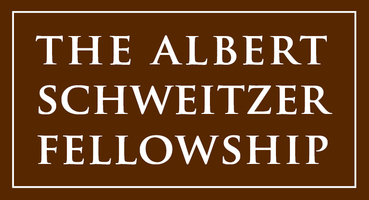Richie Heng and Mike Anderson, both Heersink School of Medicine students, give us the inside scoop on their project status, tell us about the challenges they’ve faced, and share with us the relationships they have formed to make their project work.
Give us the specifics of your project. Where and who are you serving and what is your focus?
Richie: Our project is focused on teaching people how to self-identify early signs of skin cancer. We’re particularly interested in reaching high risk populations such as agriculture workers, construction workers, and other fields that spend a considerable amount of time in the outdoors. We believe the current media and common educational material focuses on informing people to avoid excessive sunlight, but we know this isn’t always possible for people who work outside. As such, the focus of our project has been hosting educational seminars to teach people how to perform self-skin checks and provide them with community resources if they suspect any unusual findings.
How has your process gone so far?
Mike: Progress has honestly been more difficult than originally expected. Our project is a simple concept, but there are more moving parts than what initially meets the eye. We’ve had to create and edit educational material approved by physicians, create partnerships with community healthcare organizations, and perhaps the hardest part has been creating presentation cohorts that are convenient for multiple people. To tackle some of these challenges, we’ve had to extend our collaborations to include free community healthcare clinics such as Alabama AHEC sites and A Promise to Help.
What are some of the unexpected hurdles you have faced?
Richie: The most unexpected hurdle has been finding cohorts that would be interested in receiving our presentation. It’s easy for us to find individuals and small groups of people who are interested but creating a room of 8+ people has been a challenge. Additionally, we initially thought it would be easy to collaborate with businesses but have had a lower-than-expected response rate for our cold outreach.
What are some ways you have needed to pivot your project from your initial plan?
Mike: Our biggest pivot has come from our failed cold outreach efforts. We started our project by spending a lot of time identifying specific population cohorts we wanted to reach, and then identified groups online to contact. Unfortunately, just about every cold outreach we sent did not come to fruition. As such, this is where the thought to collaborate with other free healthcare clinics has come from since they already see patients for a variety of other needs. In review, we probably should’ve started all outreach efforts sooner and adjusted based on what did and didn’t work.
What are some of the victories you have experienced?
Richie: One common theme we’ve seen is how willing people are to help us with our project. We were able to connect with the nonprofit group Impact Melanoma to create some excellent education material, Alabama AHEC sites to translate our material into Spanish, and countless community members who’ve survived skin cancer and given their advice on our project.
What made you choose skin cancer as a topic?
Mike: Richie and I both grew up spending a lot of time outside. Richie played tennis and I spent my free time fishing. The common theme was sun exposure and as a result we both know many people who’ve been affected by skin cancer. We both also felt that the media has done a fantastic job educating the next generation on wearing sunscreen and avoiding sunburns, but there wasn’t much focus on teaching people how to identify the early warning signs of skin cancer. Thus, our project idea was born, and we felt passionate about the need!
How has balancing school/ASF/life been for you?
Richie and Mike: We’d be lying if we didn’t say it was challenging at times. We think all adults would agree, that it seems like the older you get, the busier you get, and responsibilities only grow. We’ve had to be very intentional to set time aside for ASF and regularly try to keep each other accountable. Finding a balance can be challenging, but we both believe in the project’s end goal and thus find that to be a driving force.



